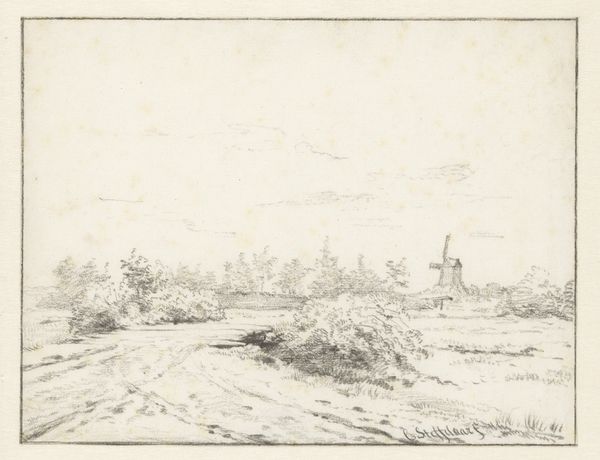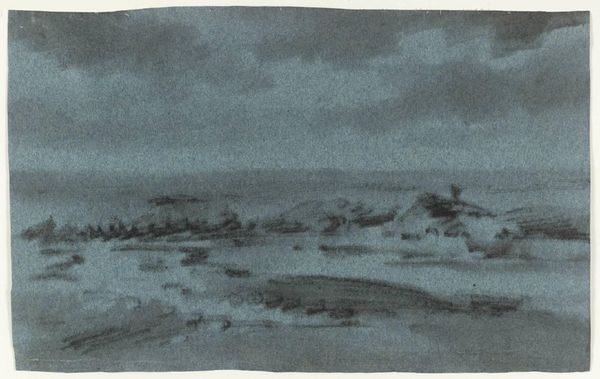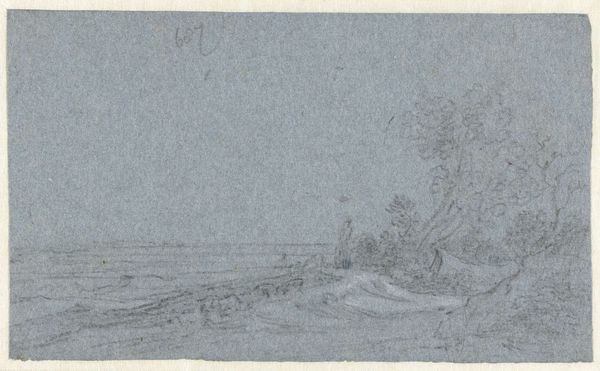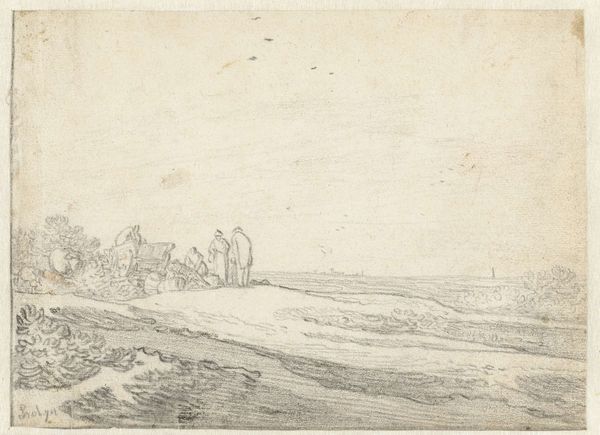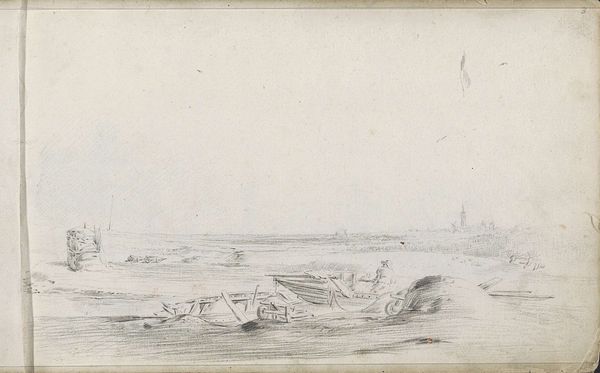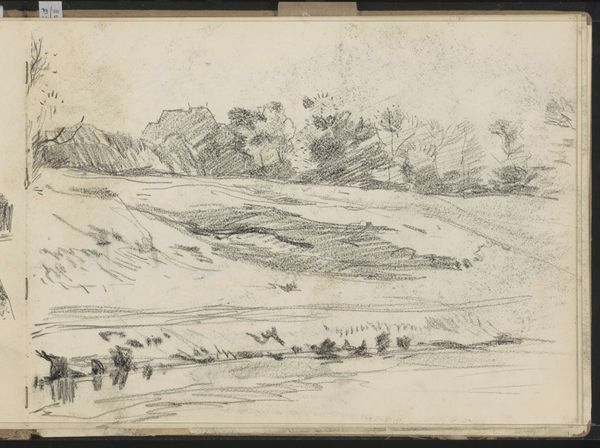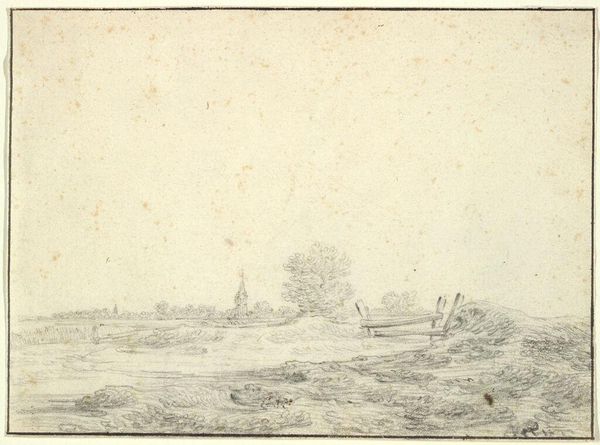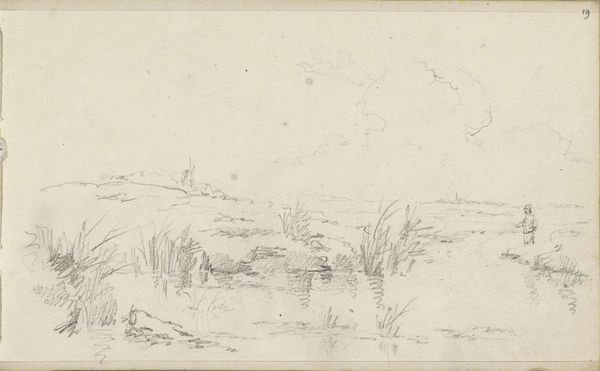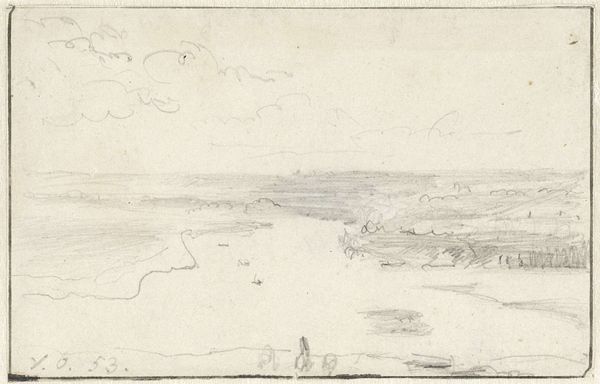
drawing, paper, ink, pencil
#
drawing
#
pen sketch
#
pencil sketch
#
landscape
#
river
#
paper
#
ink
#
romanticism
#
pencil
Dimensions: height 281 mm, width 432 mm
Copyright: Rijks Museum: Open Domain
Curator: This is a drawing entitled "De Rijn bij Rhenen," or "The Rhine at Rhenen." Created by Jan Hulswit sometime between 1776 and 1822, it employs ink and pencil on paper to capture a tranquil waterside scene. Editor: It has a very subdued and dreamlike quality. The tonal range is narrow, almost monochromatic, and it's striking how this delicate rendering evokes a feeling of vastness and serenity. Curator: Indeed, the subtle use of line and wash serves the picturesque aesthetic so valued during the Romantic era. It certainly depicts the Dutch landscape, yet I feel like there is more, a connection with nationhood during a period when the Dutch Republic ceased to exist due to the Napoleonic occupation and the later formation of a kingdom. The location shown became contested when the Prussian empire attacked the region much later. Editor: Looking closely, I'm drawn to the small figures along the riverbank. Their presence subtly amplifies the sheer scale of the natural environment. Those figures seem somewhat emblematic; they become everyman standing in observation. Curator: Note too the very even layering, especially the treatment of clouds and reflection of light on water and sand; notice, there is something solid to this picture that does not rely on dramatic strokes. There's a restraint at play that perhaps mirrors the temperament one often associates with Dutch identity formation in times of geopolitical conflicts. Editor: The boat itself has very simplified, classical lines. This reminds me of themes of voyage, and movement, very much in harmony with that emblematic observation position you mentioned previously. A potential metaphor perhaps, suggesting continuous cultural negotiation that occurs across boundaries, a theme visible throughout Dutch painting. Curator: I find that a rather insightful interpretation. To me, that small craft implies a nation coming back to terms with its history and reshaping its identity in the turbulent currents of Europe's changing power structures. Editor: Ultimately, Hulswit presents us with a quiet contemplation of landscape infused with profound historical currents, using simple visual devices. Curator: Absolutely, and I appreciate seeing the complex interaction of history and pictorial tradition contained in such an unpresuming composition.
Comments
No comments
Be the first to comment and join the conversation on the ultimate creative platform.
